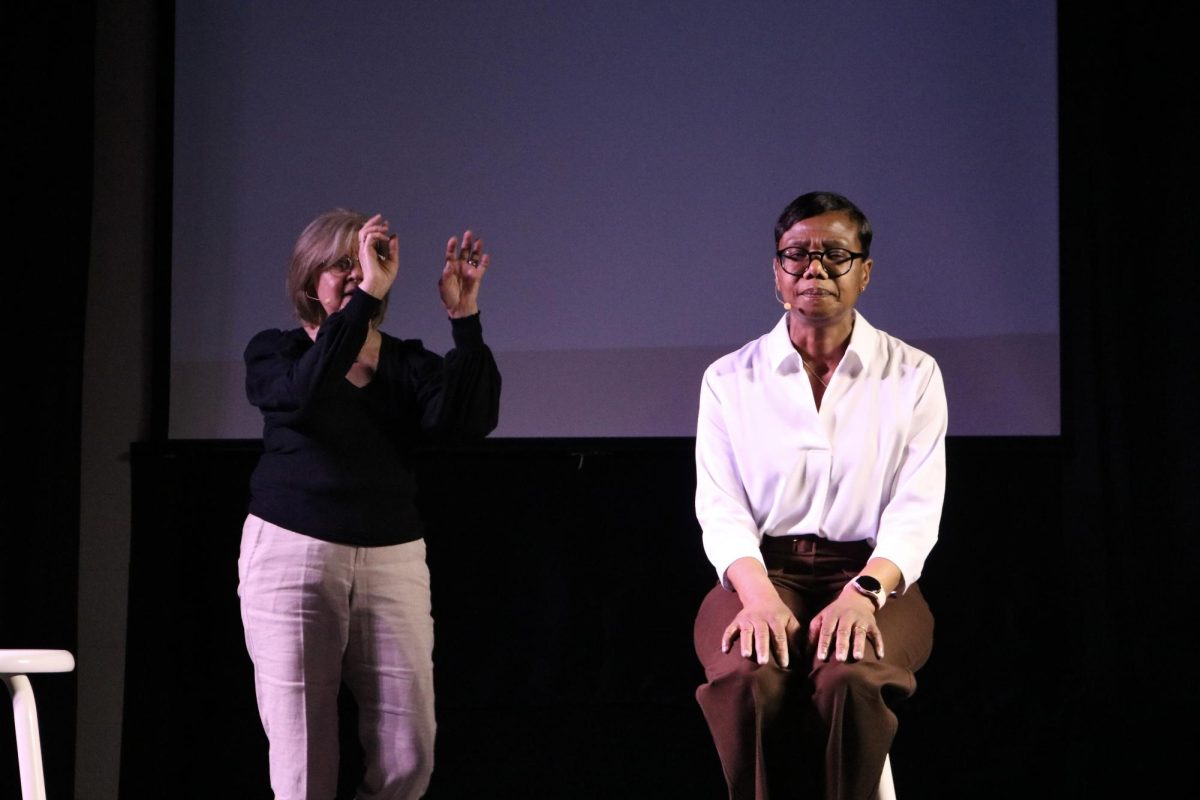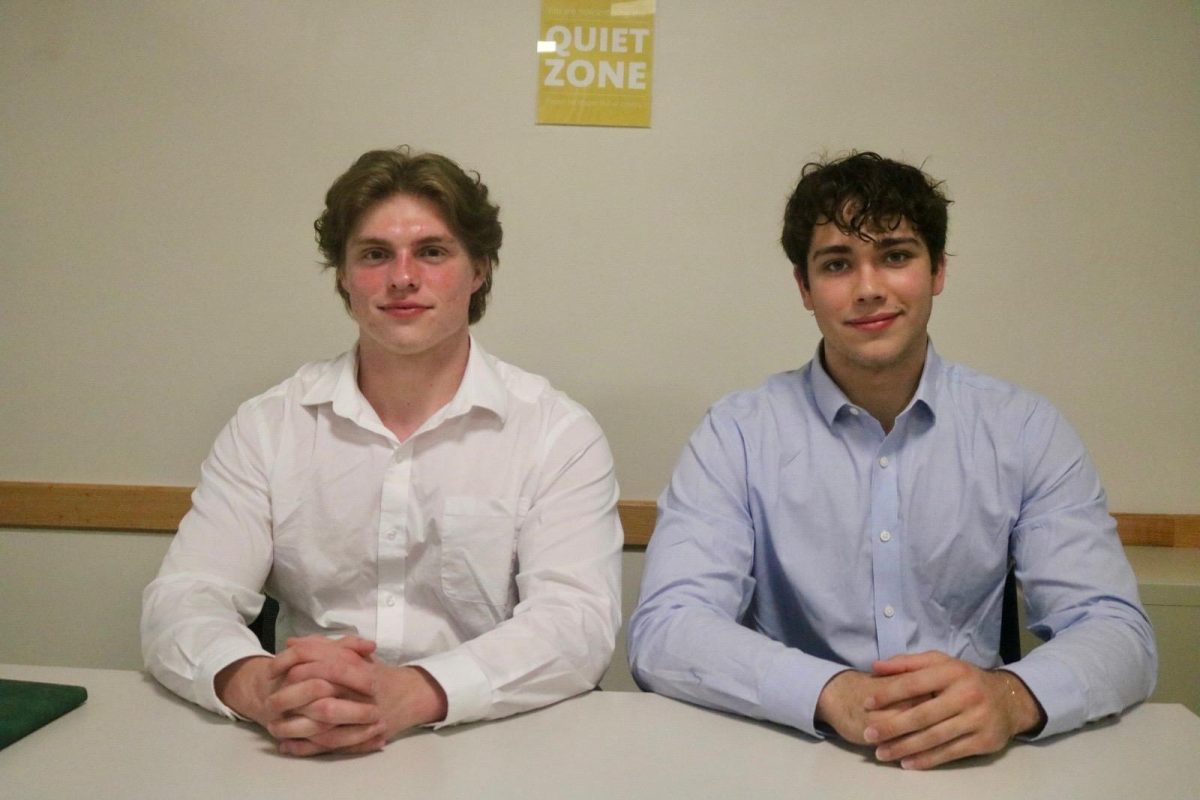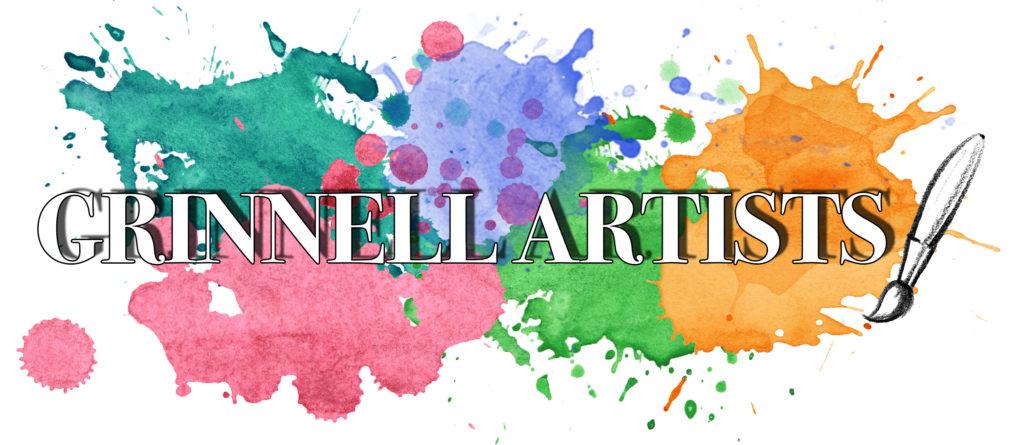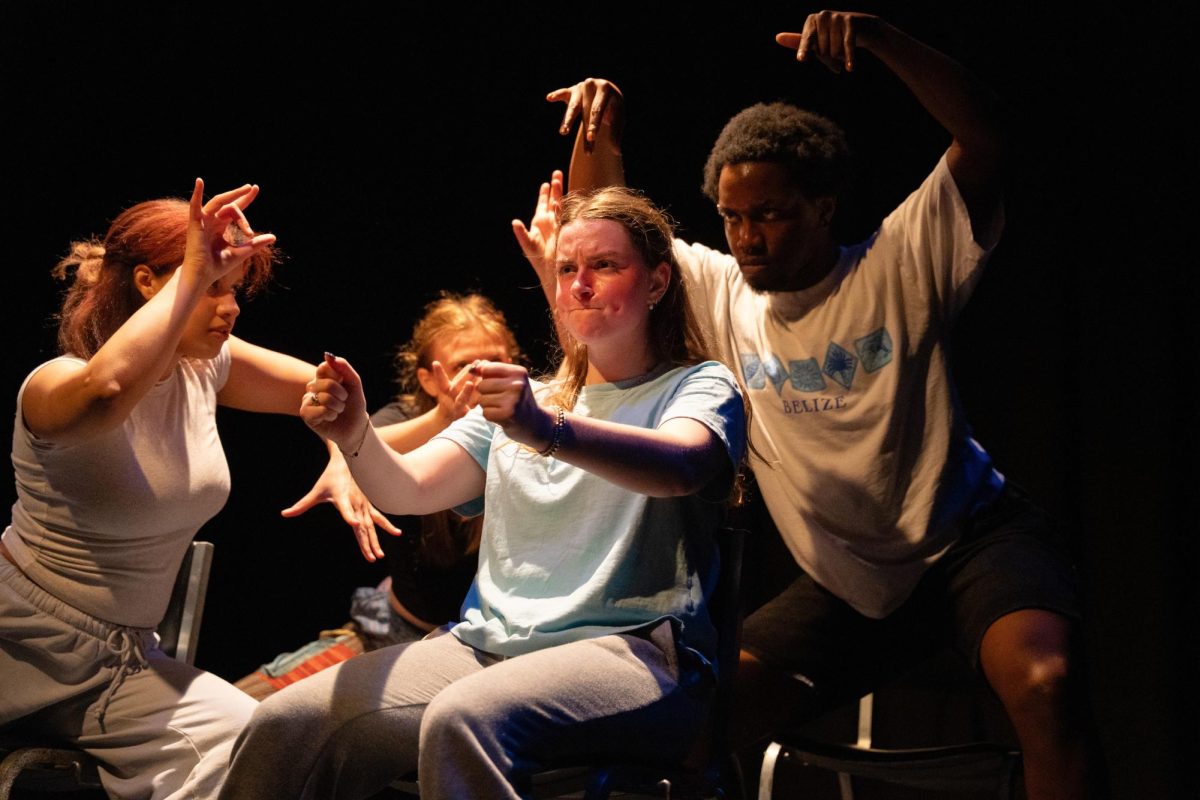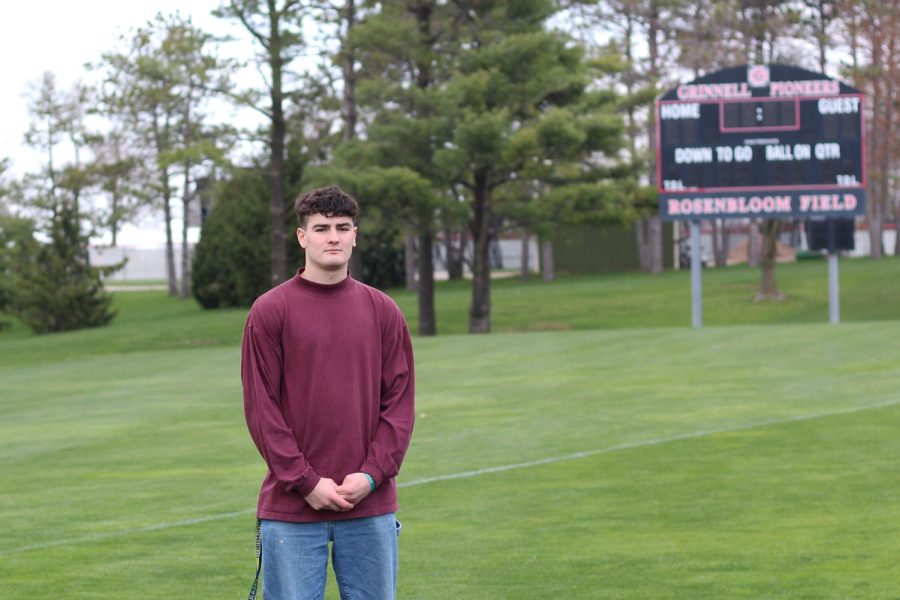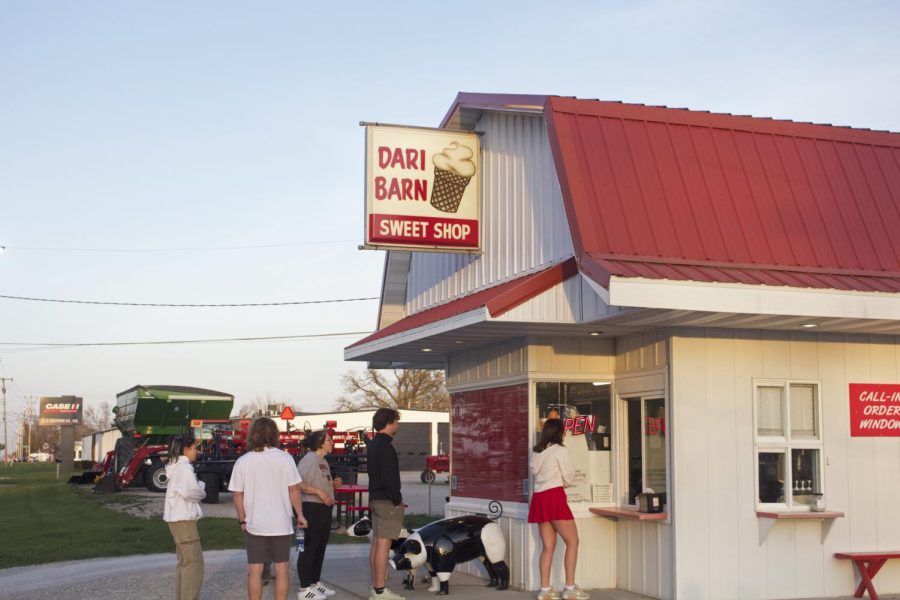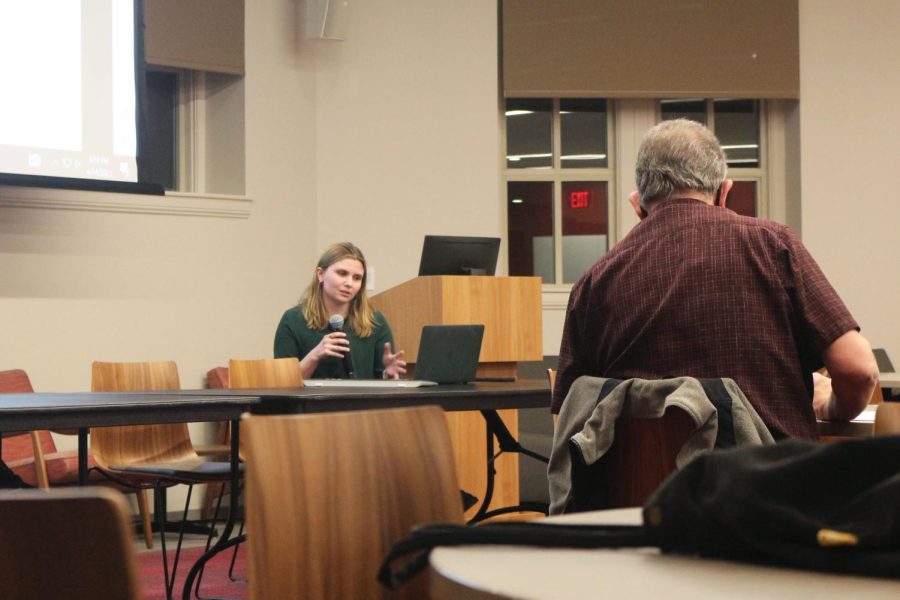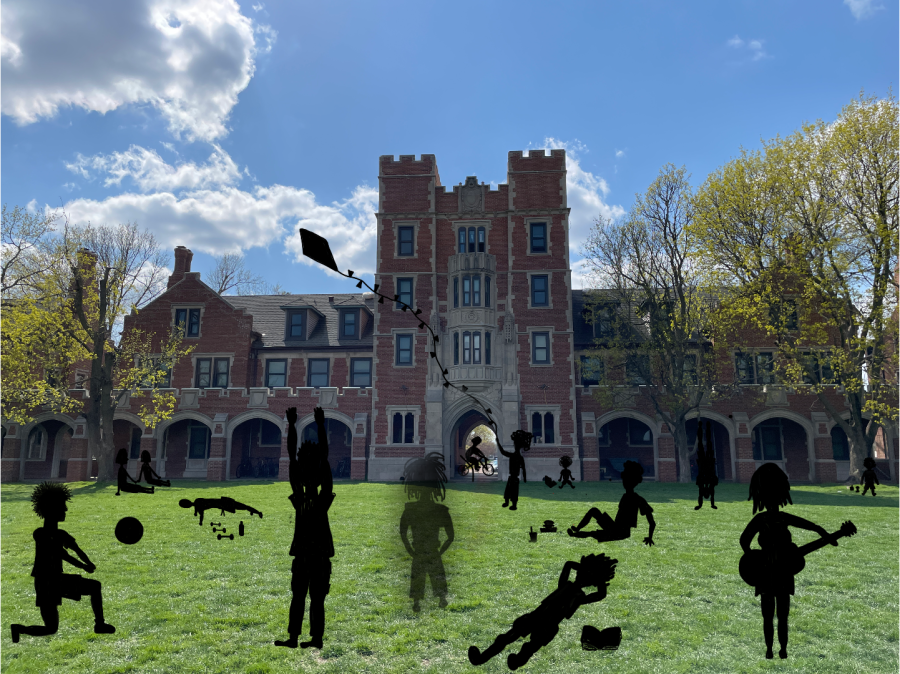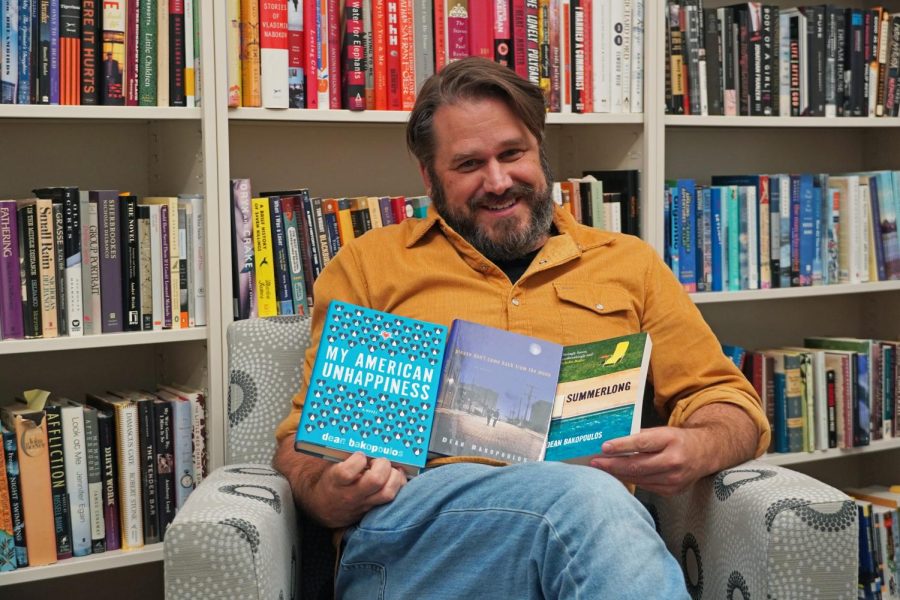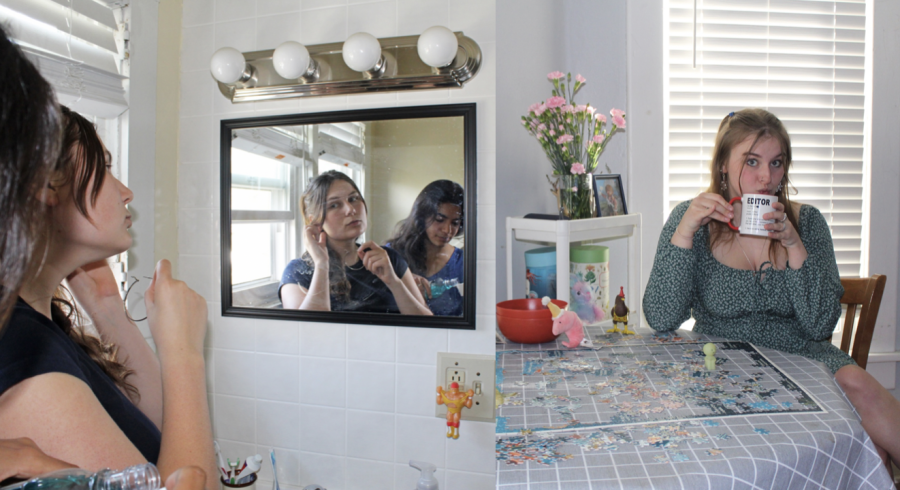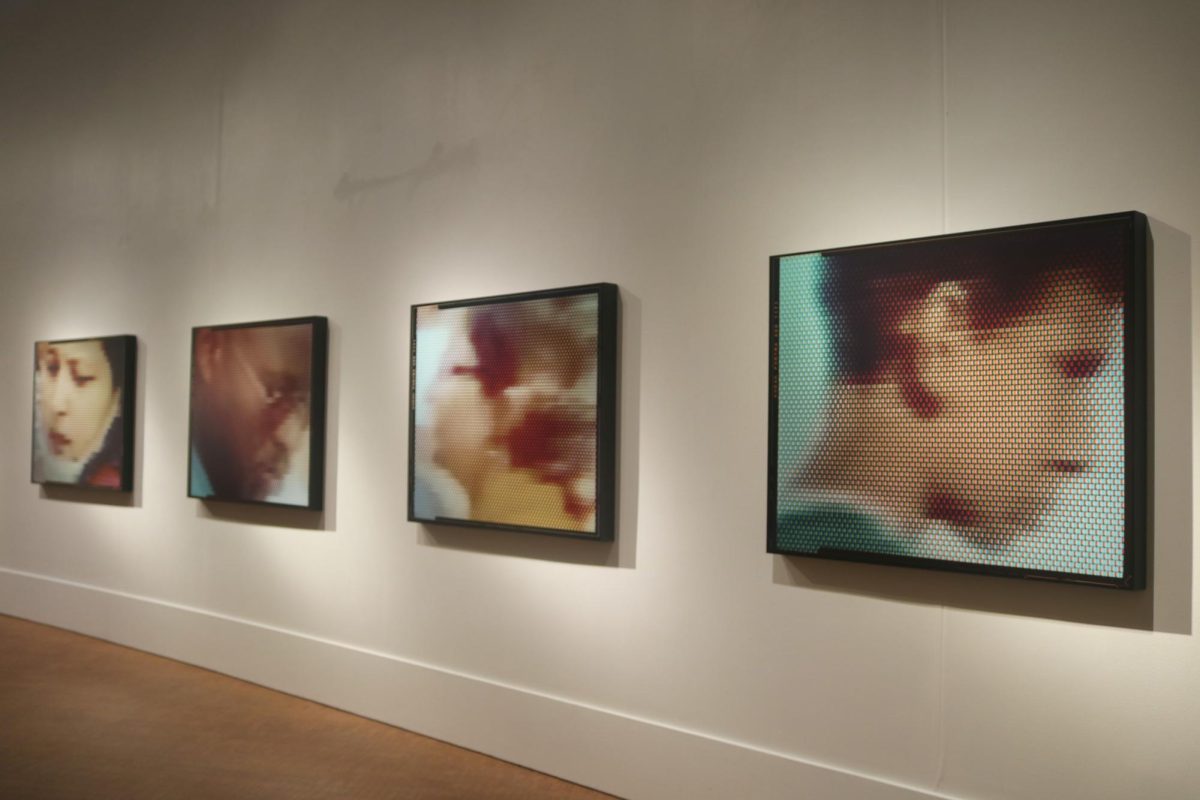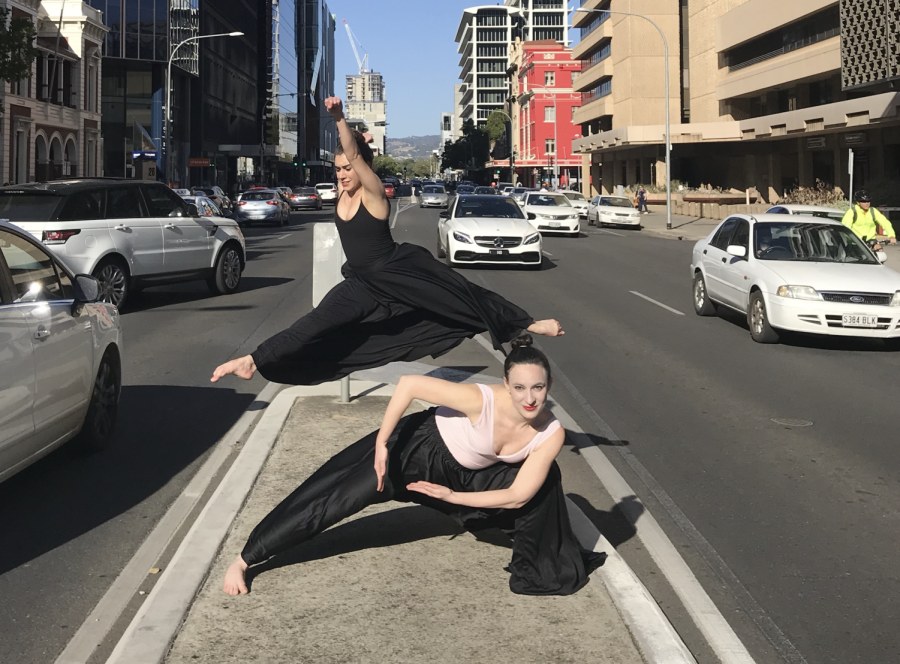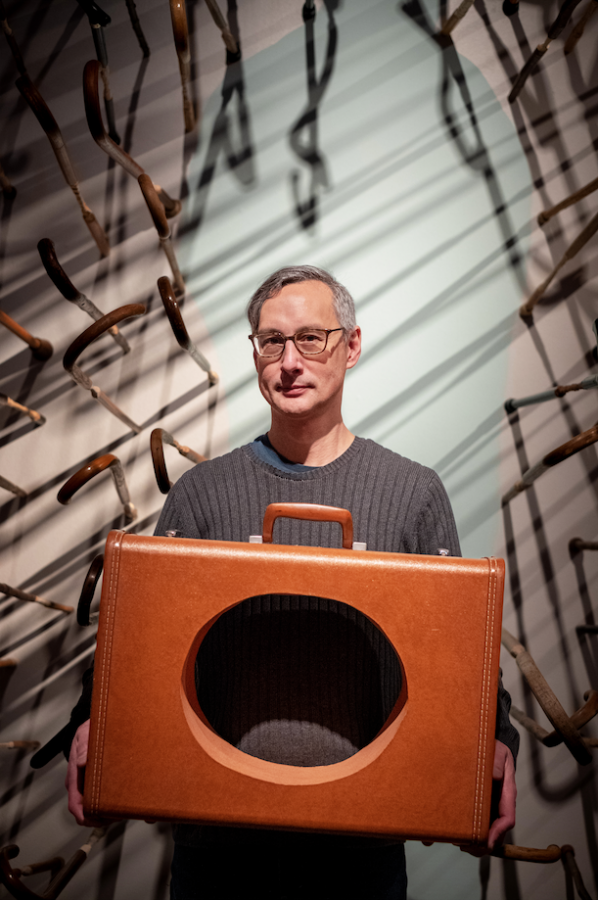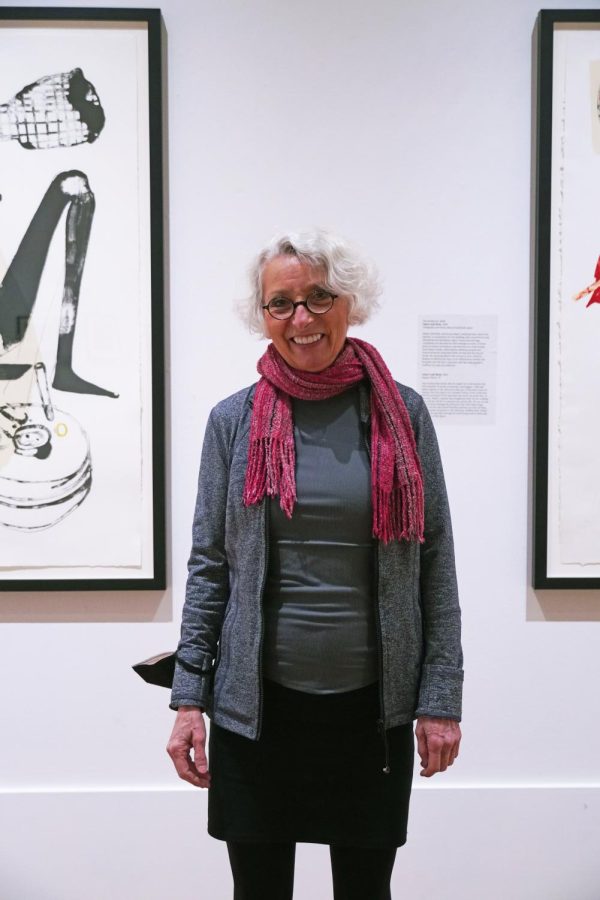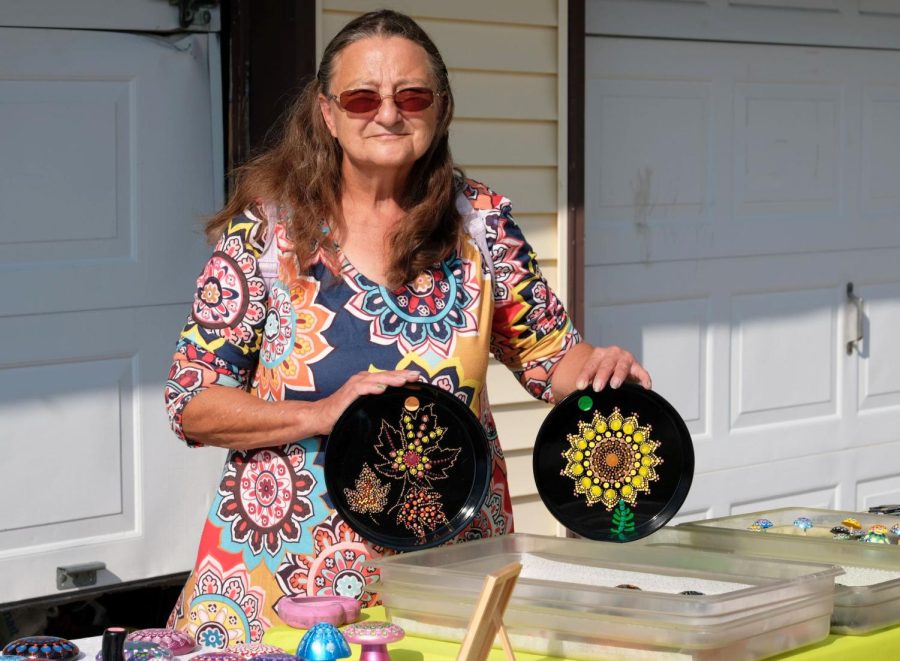Molly Nelson
nelsonmo@grinnell.edu
In high school, Charlotte Richardson-Deppe ’19 swung from the trapeze in circus shows and performed in musical productions. Now at Grinnell, Richardson-Deppe lives in Food House and is a studio art and gender, women and sexuality studies double major. Her art here looks a little different. Soap infused with pieces of raw meat. Plastic pill bottles and toothbrushes wrapped in translucent handmade paper. Three drawings of prairie grass, all five feet in height. A dance involving a sculpture of a pair of horns made out of plywood and glue.
Richardson-Deppe is now intent on taking two studio art classes per semester and making art her career. But while Richardson-Deppe had extensive experience in the performing arts coming into college, it was only during her first year at Grinnell that she discovered her passion for creating visual art.
“I think I had really internalized at a young age that if you aren’t good at [realistic life drawing], then you can’t do art,” Richardson-Deppe said. “And I think a lot of people internalize that and don’t realize that you have to practice drawing to be good at it, and you don’t have to be a good drawer to be an artist.”
During her first studio art class, Richardson-Deppe realized her own misconceptions about drawing. Her love for art was solidified in her second year under the mentorship of Professor Lee Running, whose class “rocked her world.”
Now in her third year, Richardson-Deppe refuses to be confined to one medium. She choreographs and performs dances, is president of the Grinnell Singers, draws and sculpts. Richardson-Deppe often combines multiple forms of media, like in her piece “Horns,” a dance involving a sculpture of horns she created out of wood and her original choreography.

During the creative process, Richardson-Deppe allows the material she is working with to inspire her art. For the final project for her Chemistry of Artists’ Materials class, Richardson-Deppe and her friend Anne Rogers ’19 were inspired by the contrast of how society views plastic versus handmade paper.
“Like with the handmade paper, we were thinking about the materiality of it, thinking about since it’s handmade people treat it so carefully … because so much labor went into it and it’s so intensive and it’s so elevated, and then we think about mass-produced plastic.”
The resulting sculptural installation, “Shelf Life,” comprises around 150 plastic objects packaged in thin handmade paper.
“It looks like packaging, like plastic packaging, but it’s flipped. It’s plastic objects inside a handmade thing.”
Richardson-Deppe points out that while plastic is cheap and pervasively used in society, it will outlive its creators in landfills and the environment. Handmade paper, however, is biodegradable. “Shelf Life” will run in Smith Gallery in the JRC from September 18 to 29.

While Richardson-Deppe purposefully tries to avoid putting specific themes in her work, she admits to enjoying art that has a component of athleticism.
“I think I do tend to make art that has to do with bodies, at least when I do sculptures or performances or dances, just because I like putting my body in the work a lot. I love dancing,” she said. “And I think when I’m working on things, I just love to lift things and I love to climb ladders and I love to work really big, like with those big prairie drawings where I’m just lying on the floor, drawing on the floor.”
Over the summer, Richardson-Deppe worked with Professor Celeste Miller, dance, to research how technology can be used in dance-based collaborative projects in comparison to face-to-face collaboration. The project was called Digital Bridges to Dance and was funded by Digital Bridges for Humanistic Inquiry, a collaboration between Grinnell College and the University of Iowa.
The project often involved a “choreographic exchange” wherein Richardson-Deppe and Miller would send videos back and forth, sharing small pieces of dance. Richardson-Deppe also sometimes reacted to dance videos by making zines that interpreted the message of a dance.
While art is generally not thought of as research intensive, Richardson-Deppe is sure that creating art is research in and of itself.
“The way I like to do research and make my academic arguments is in these art projects where you make someone think of something new, like when you read a paper and think ‘ah, I hadn’t thought of that before.’”
Richardson-Deppe wants to encourage everyone to create art, whether that be through visual or performance arts, or anything from writing poetry to cooking beautiful desserts.
“Food and community and art are the staples of everything,” she said.
Richardson-Deppe described how art was especially important in bringing the community together at Grinnell during election week. Professor Running helped organize “sew-ins” in order to create a banner for the Standing Rock protesters.
“I think art is the most radical thing you can do in a capitalistic society,” Richardson-Deppe said. “Art disrupts everything.”

Photo by Helena Gruensteidl





